What remains of the Flugplatz Oranienburg can be seen not that far away from the Oranienburg Hauptbahnhof. Built before the Second World War, between 1936 and 1939, this abandoned airfield was used until 1945 by the Luftwaffe and the Heinkel-Werke Oranienburg.
Nowadays, there isn’t much to see there besides some buildings around a hangar. Most of the area where the airfield used to be was taken over by constructing a federal highway back in 2003. A few years later, the supermarket REWE built a distribution centre in the area.
We have been thinking about going there since we first read about it on Abandoned Berlin back in 2012. When we visited the Brotfabrik in 2014, we were split between both locations and ended up leaving the airfield for another time. Only in March 2021, we took our bikes and cameras there. It was worth the wait since we also took drones there and managed to capture the abandoned Flugplatz Oranienburg from the top, as you can see in the video and the pictures below.
Before we start talking about flying drones in an abandoned Second World War airfield, we have to tell you a bit about the history of the place and how Heinkel-Werke Oranienburg is connected to Flugplatz Oranienburg.
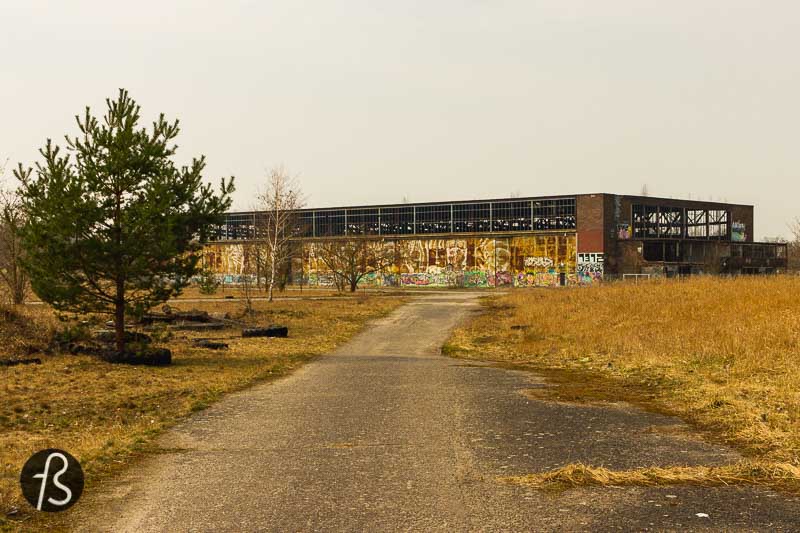


Flugplatz Oranienburg: A little bit of history
When the Nazis came to power, the Treaty of Versailles forbid the country from having an air force. But, in early 1935, Hermann Göring presented the new Luftwaffe to the world, and a lot of the planes in that new Nazi airforce have been built by Ernst Heinkel in Rostock. One of its planes, the Heinkel He 111, would become the standard airplane for the air forces. The factory in Rostock wasn’t able to manufacture more. A new factory was needed, and this is how the Heinkel-Werke Oranienburg came to be.
Heinkel-Werke Oranienburg was split into two different factories, which opened in May 1937. The first one was called Oberwerk. There were halls, workshop buildings, and many warehouses and areas to build fuselages and parts of aeroplanes. The second factory was called Plant II, and it was built within the Flugplatz Oranienburg with two large halls and a shooting range.
Together with the factories, Heinkel-Werke Oranienburg built a housing state in the city so its workers could be housed without any problem. Today, this area is known as Weiße Stadt, and it’s made of 18 apartment blocks and more than 600 apartments.
In the beginning, most of the workers manufacturing aeroplanes at the Heinkel-Werke Oranienburg were Germans. People from all over the country moved into the settlements to work. In 1939, the first war prisoners started arriving at the factory, and a barrack camp was built close by. From 1942, prisoners from the Sachsenhausen concentration camp were brought over to work in the production. On its highest numbers, 14,000 people worked at the factory, including prisoners of war, concentration camp inmates, slave labour and German workers.


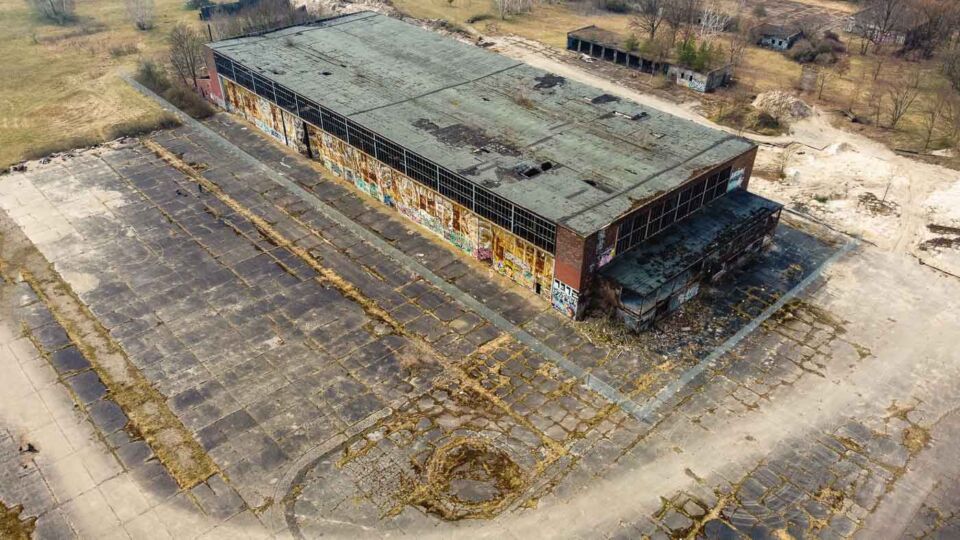
During the first few years, the factories were exclusively focused on building Heinkel He 111. The first steps were taken at Oberwerk and then assembled at Plant II, where the wings were attached to the aircraft. After manufacturing was done, pilots would carry three test flights with each plane and then deliver it to the Luftwaffe.
The main aircrafts built and tested at the Flugplatz Oranienburg were the Heinkel He 111, which was the focus of the plant until October 1944, Junkers Ju 88 and Heinkel He 177. But one of the most exciting things that ever happened at the airfield were the tests for the first “stealth jet plane”, the Horten Ho 229 Flying Wing. These planes were supposed to carry a ton of bombs for a distance of a thousand kilometres at a speed of 1,000 km per hour. These were the demands from Hermann Göring and were known as the 3×1000 requirements.
Today, the only surviving Horten Ho 229 is at the National Air and Space Museum in Maryland.
At the end of the Second World War, in April 1945, the Flugplatz Oranienburg and the plants were attacked. But the air raids did not cause significant damage to the production. Which only stopped a couple of weeks later when Soviet and Polish soldiers took over the plant.
The Flugplatz Oranienburg and the Heinkel-Werke Oranienburg plants were taken over by the Soviet military administration and wholly dismantled. Only the hangars at the airfield, the Weiße Stadt and other small buildings stayed.
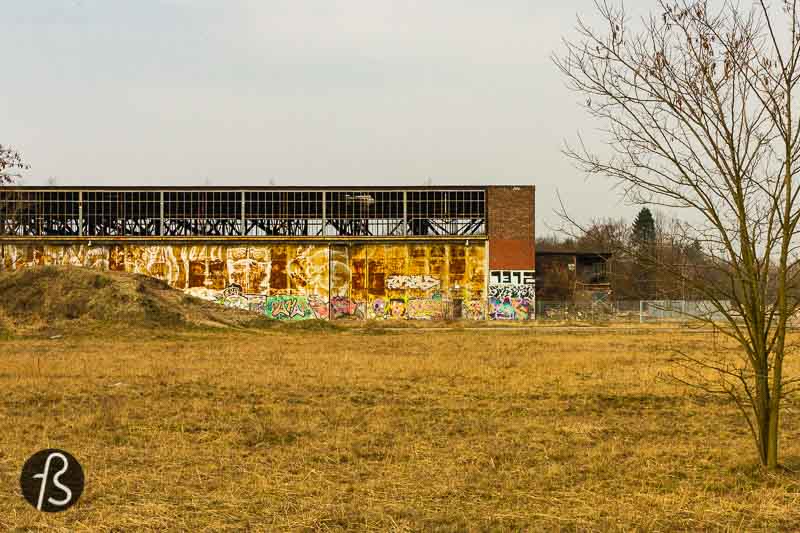


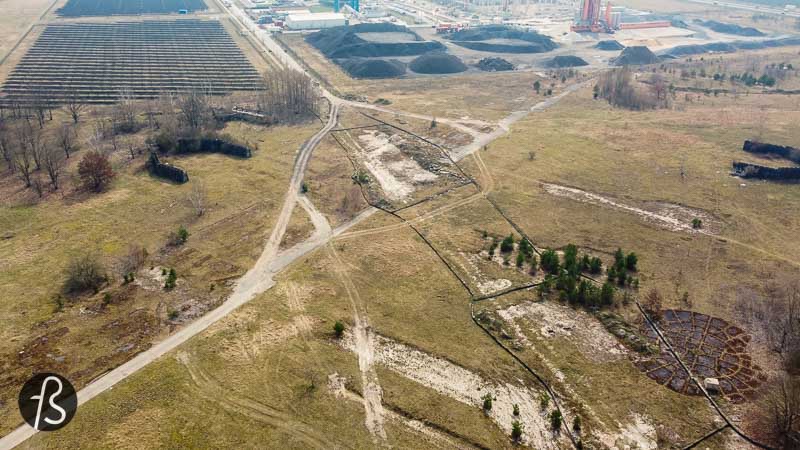
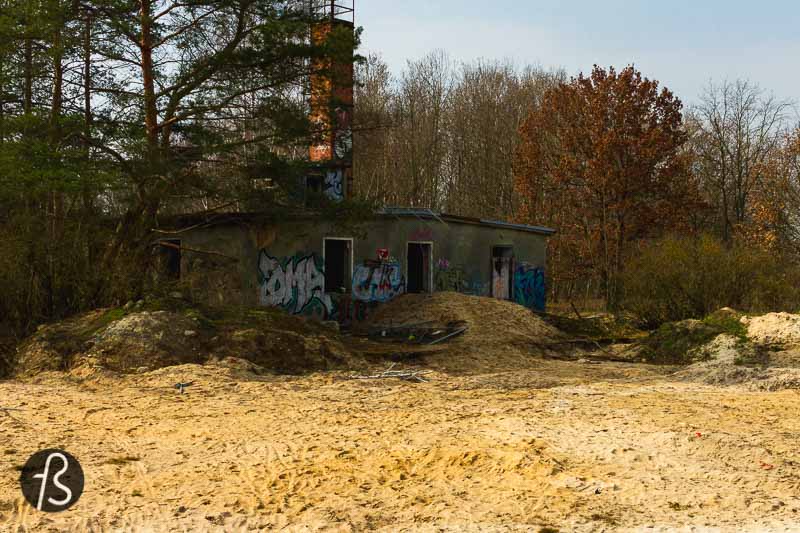
Today, the area where the Oberwerk used to stand is used by different companies, and there are not many traces of what used to be there. The Flugplatz Oranienburg has been partially converted into an industrial park with a REWE distribution centre, some parking space for trucks, a solar plant with more than thirty thousand solar panels and a federal highway. Only the main hangar still stays in place since it is a listed building for historical preservation. This is why there is a fence around it today, even though the area seems like it has seen better than in the not so distant past.
One of the reasons why we took our cameras to the abandoned Flugplatz Oranienburg was to fly drones. We love to document how abandoned places look like from the sky. This is why, in March 2021, our friend Ronaldo Pace and his drone went on a bike ride to Oranienburg.
There we managed to see the V like structures used to reload ammunition to the aeroplanes that were kept at the airfield during the Cold War. We also managed to capture some forms that looked like helicopter pads and other things.
But the most incredible thing was that Ronaldo managed to fly his drone inside the hangar, so we can thank him for that since we didn’t want to jump the fence to see how the hangar looked like from the inside.
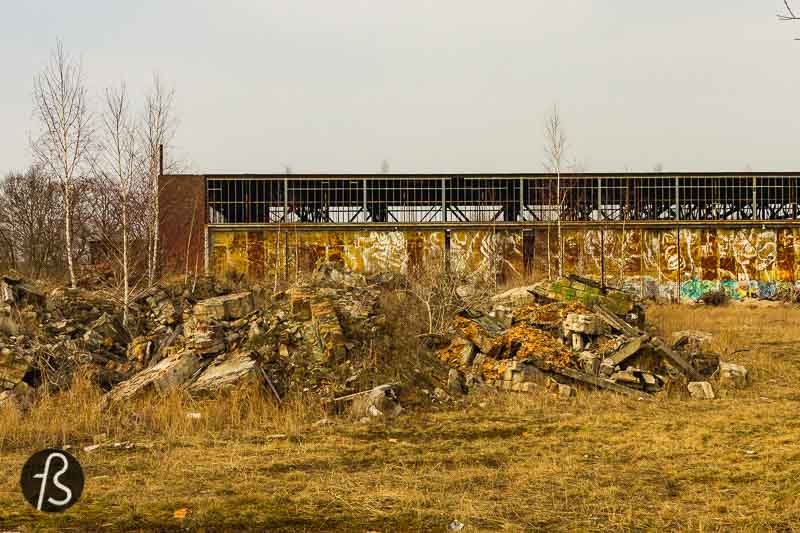

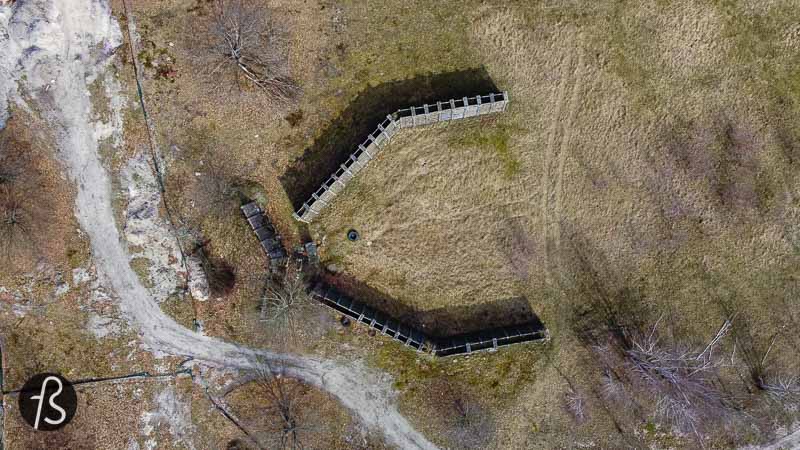
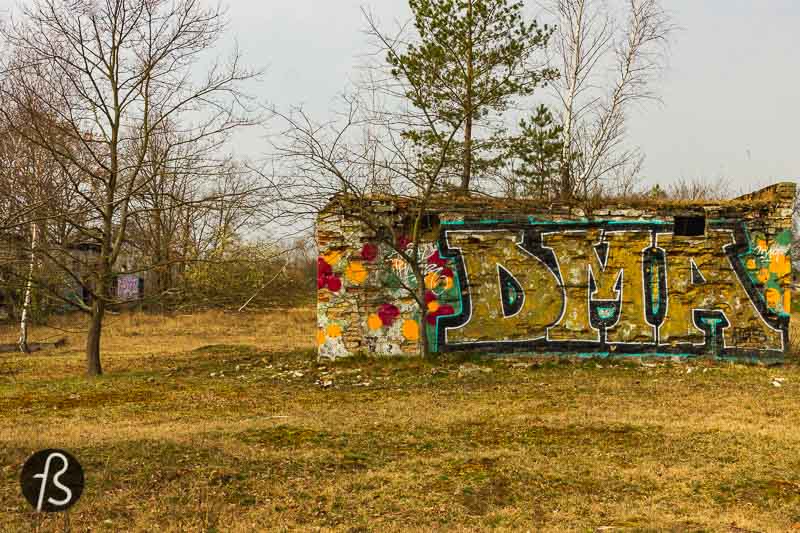
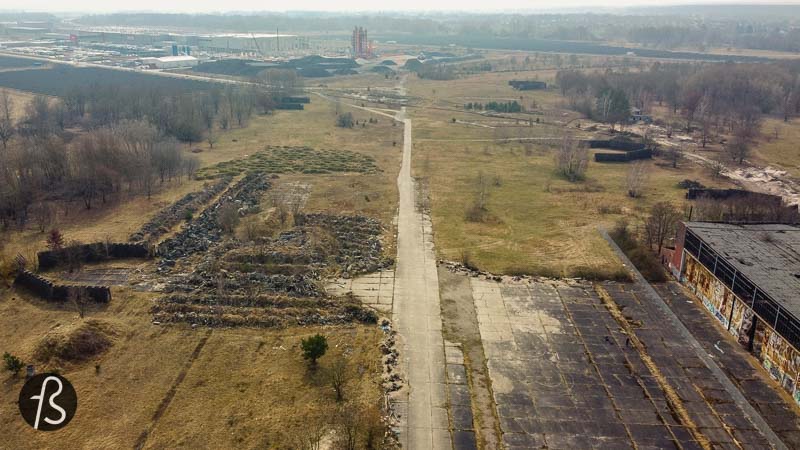
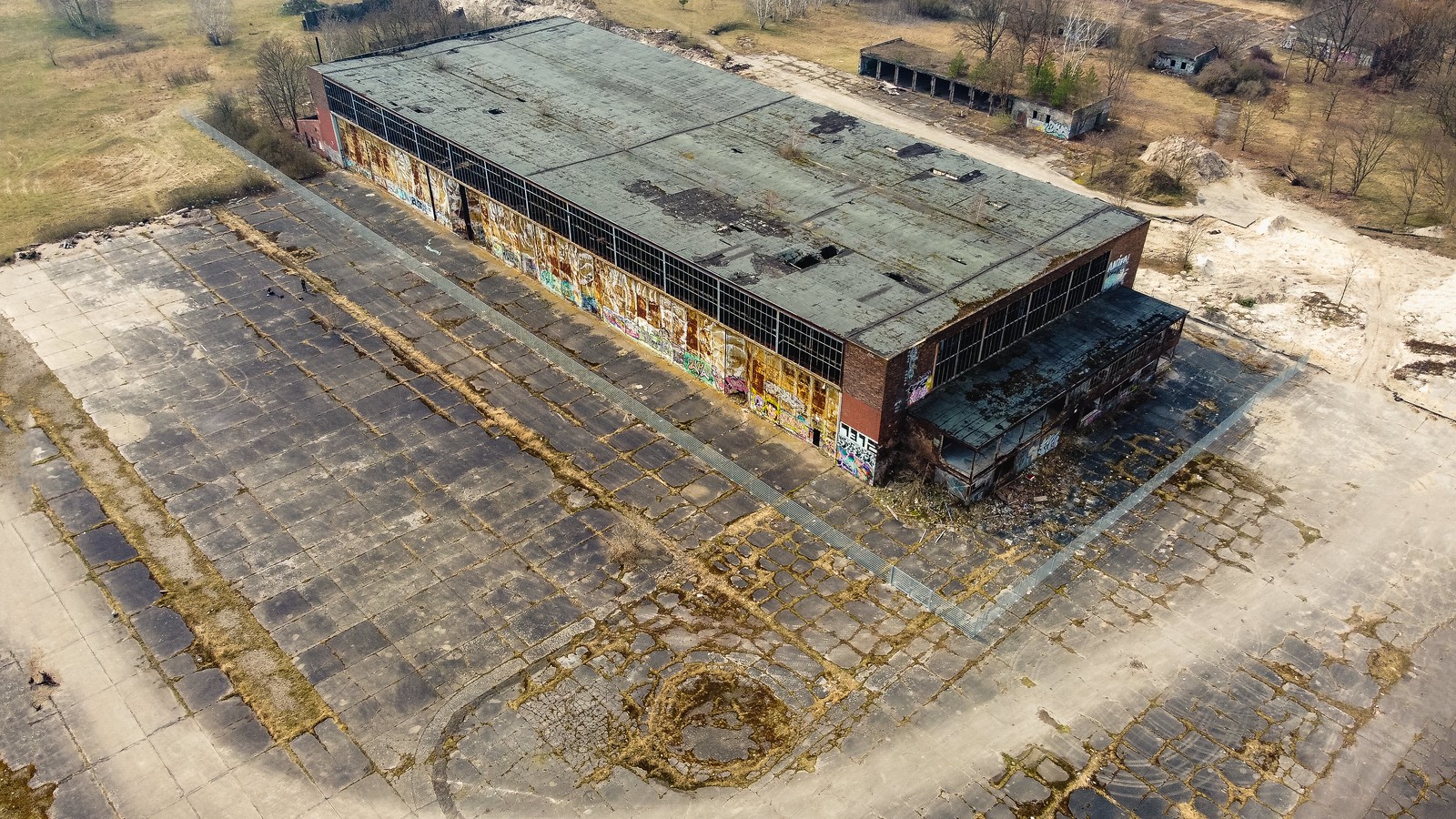
If you want to visit the Flugplatz Oranienburg, it’s pretty easy to do it. We saw people walking by with dogs, others cycling past it and even a guy that seemed to us like he was learning how to drive a motorcycle. The fence surrounding the hangar makes it harder to see how it looks like from the inside. However, this place is still interesting for people that like urban exploration. If you have a drone, know that it looks even better from the top with some weird concrete textures and abandoned structures.
The map below will guide you into the Flugplatz Oranienburg. We can quickly advise you that the best way to reach the airfield is by bike from the Oranienburg Hauptbahnhof. The bike ride took us less than 20 minutes, and it was pretty easy to spot where the airfield is located.
Go there, take all the pictures you want and leave the place as it is. If you are curious, the drones we flew are two DJI Mavic Mini. And if you want to see more pictures of this place, we shared higher resolution pictures on Flickr.
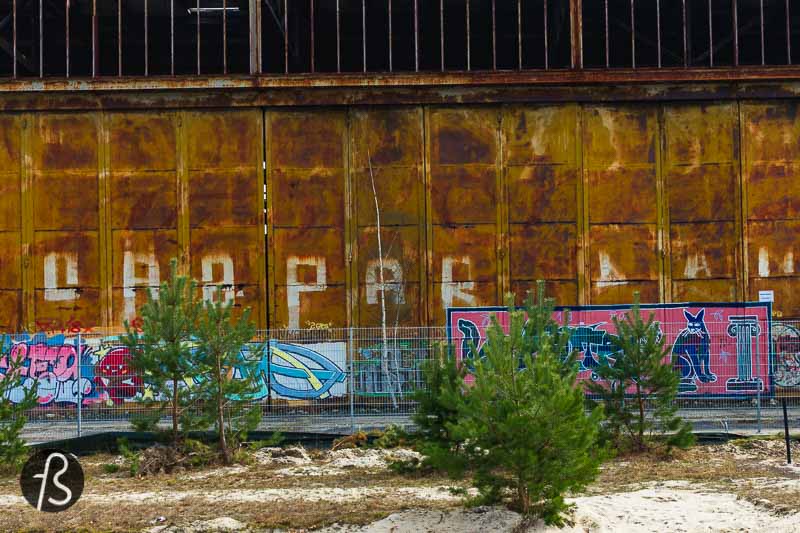
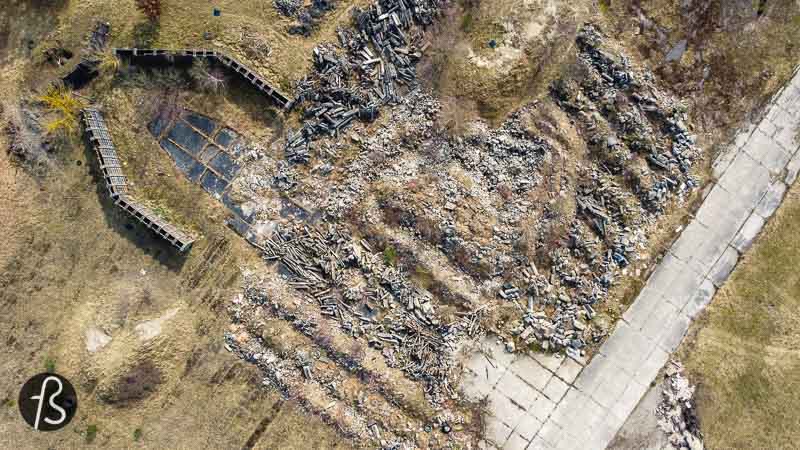
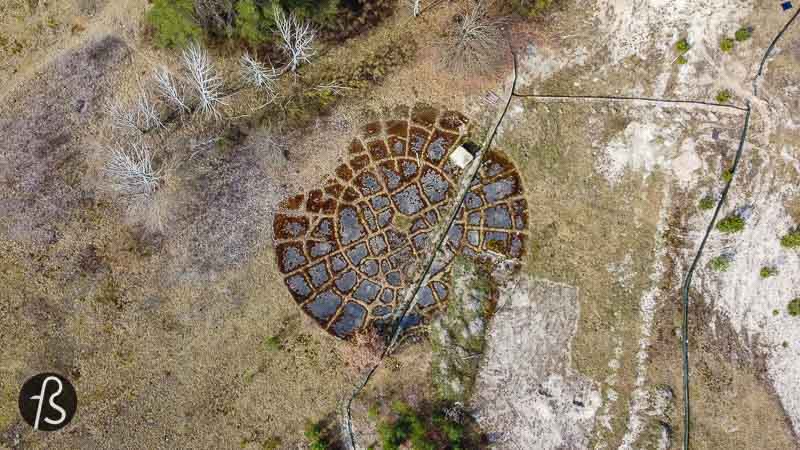

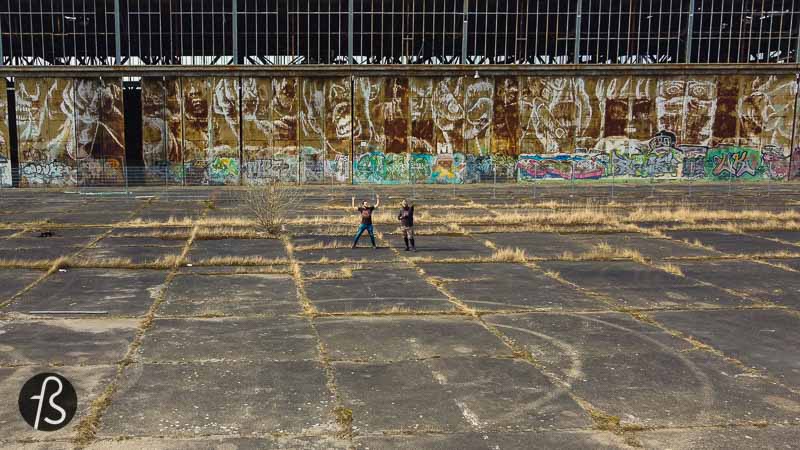
Exploring the Flugplatz Oranienburg
Flugpionierstraße, 16515
Oranienburg, Germany
If you are interested in what we wrote about other abandoned airports and airfields around Berlin, you will love to read about Flugplatz Rangsdorf, Flugplatz Johannisthal , and Flugplatz Brand.